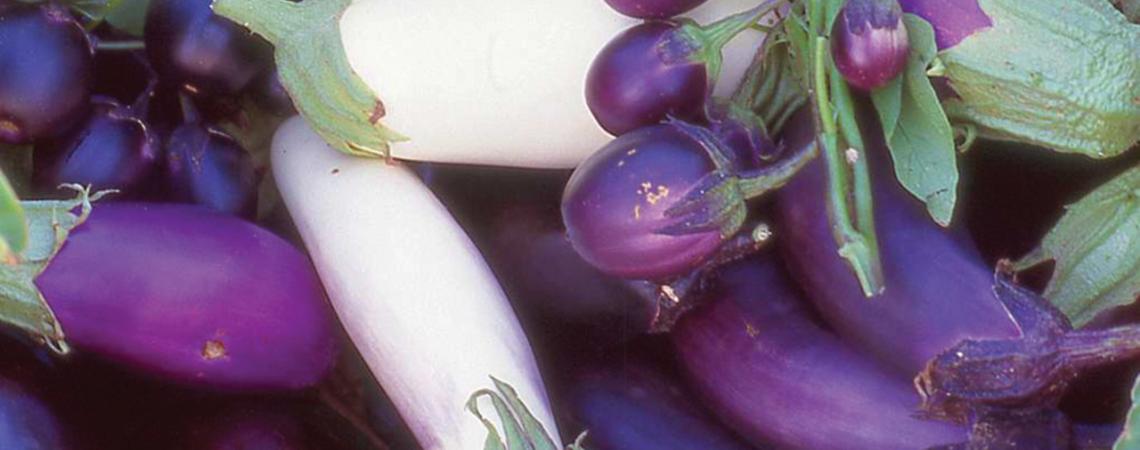Photo by Rick Wetherbee
Years ago, I discovered that there is a lot to like about eggplant.
Aesthetically captivating, the plant’s gorgeous lavender flowers, followed by a glistening display of purple to purplish-black fruit, are a striking addition to the garden. Additional fruit color options include pearly white, soft orchid, and bright orange. Some varieties also produce fruits in various interesting shapes, from the classic oval to an elongated teardrop to long and slender or curved like a banana and even round balls that are the perfect size for shish kebabs.
This 2- to 4-foot-tall warm-season annual is easy to grow where summers are long and warm. For gardeners whose summers are a bit shorter, there are also varieties that mature quickly or are well-suited to growing in containers. Eggplant excels with two to three months of warm summer days and nighttime temperatures that frequently remain above 60 degrees.
Getting started
Wait until the weather has warmed and all danger of frost has passed before planting. Ideally, it’s best to wait a couple of weeks after tomatoes have been planted before putting eggplant in the ground. Starting with 8- to 10-week-old transplants will give you a jump on the season, or you can start plants indoors from seed about eight weeks in advance of planting.
For best success, choose a sunny, well-drained site with fertile soil rich in organic matter. To help reduce disease, be sure to choose an area where tomatoes, peppers, and other nightshade members did not grow the previous year —preferably the previous two years.
Planting
Eggplant is a heavy feeder, so rich soil is imperative to growing healthy plants and tasty fruit. Start by digging in a 1- to 2-inch layer of rotted manure or compost into the growing area or to each hole before planting, then water well. Plants also flourish in soil rich in minerals, which can easily be added to the planting hole via rock dust and/or greensand.
Space transplants 18 to 24 inches between plants, depending on the variety, and 2 to 3 feet between rows. For gardeners growing in raised beds or using the square-foot method, plant 18 to 24 inches apart in all directions. Be sure to place transplants slightly deeper in the ground than they were in the pot. Then stake or cage plants so they have support as they grow to prevent them from falling over when laden with fruit.
Growing guide
Feed plants lightly with composted animal manure or a complete organic fertilizer suitable for tomatoes about six weeks after planting, then side-dress with additional fertilizer after the first fruits form.
Water deeply and always keep the soil evenly moist but not wet, for best-quality fruits. Using a soaker hose or drip system at ground level is ideal. Also, be sure to add a layer of mulch, such as straw or compost, once plants become established. The mulch will keep soil moisture levels more even and help suppress weeds.
Harvest tips
While warm, rich soil and uniform moisture along with warm air temperatures are all necessary for growing bitter-free fruit and quality yields, all can be lost if the fruits are overdeveloped when harvested. The texture can easily become spongy, pithy, and bitter once the fruit is too mature. This is one case where smaller is better, as young fruits usually have the best texture and flavor. As such, harvest fruits while young and firm and after they develop their color, but before they lose their shine. Fruits are too bitter once the skin turns dull. Glossy and richly colored is best.
Be gentle when harvesting to avoid bruising fruits. Use heavy-duty shears, hand pruners, or a sharp knife and cut about an inch above the calyx (cap) so that a short piece of the stem remains intact. Most varieties are prickly on the stems, but you can easily avoid irritation by wearing gloves or long sleeves when picking fruit.
Kris Wetherbee is a master gardener who lives in Oregon.









